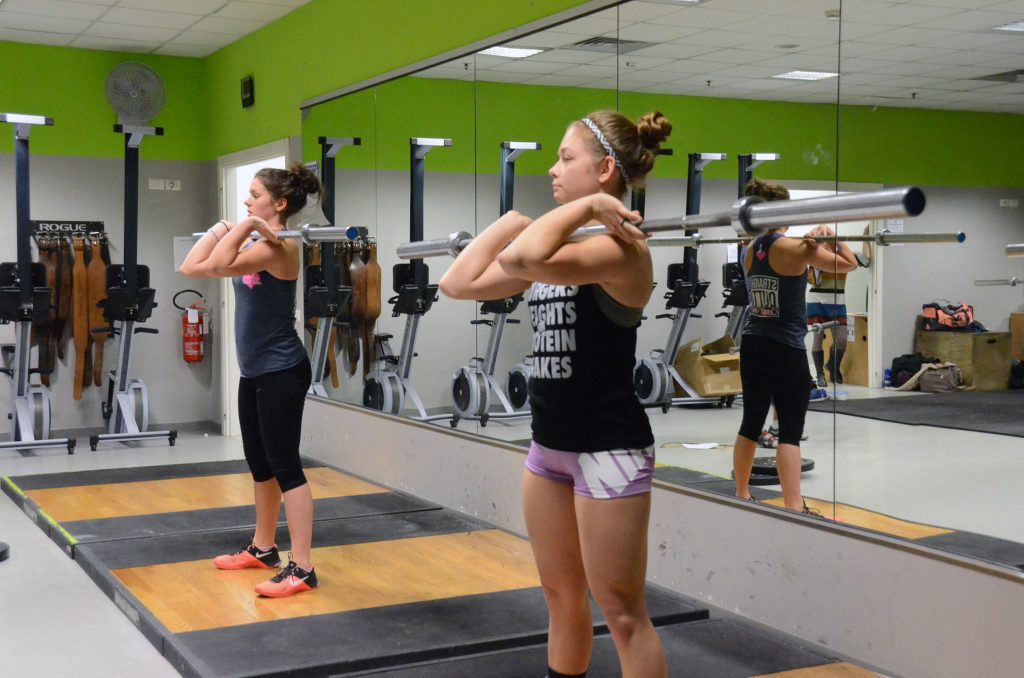Weight training for women: Preface and introduction
By Ari Snaevarsson, Features Editor
Welcome to part one of my latest series. While this instructional series is technically only directly applicable to 53% of our student population, a lot of the information I will be going over relates to sex differences in training, that draws on physiological training adaptations, so naturally there will be some utility for my male readers. Not to mention, ideally some of the men reading this will go on to bring their female friends or significant others with them to the gym. One can only hope!
The gender divide in the weight room
Unless training with their sports team, it would seem, to any unknowing onlooker, that the cardio section is for women and the weight room for men. Every now and then, women – often with their training partners – venture down to the weight room. But, at least from my conversations with females, this is generally an unnerving experience. This is unfortunate, because they are inevitably robbing themselves of a profitable undertaking.
The benefits of weight lifting for women
The benefits to expect from instituting a consistent training regimen are many, and this of course holds just as true for men as it does for women. More obviously, women stand to gain a handful of important adaptations:
-Fat loss and/or muscle gain (more on this later)
-Strength gain/carryover to sports
– General betterment of health parameters (clearance of blood glucose, clearance of triglycerides and VLDLs, improved cardiac output, etc.)
Less obviously, we can consider that weight lifting for women can confer:
-A boost in confidence
-Stress reduction
-Better posture
-Injury risk reduction
-The ability/opportunity to inspire others around them (do not underestimate this!)
Dissimilarities in training factors between the genders
When discussing in what ways training protocols vary between the sexes, we are faced with two main categories to consider. There are the physiological differences, features inherent to the hal lmark makeups of either biological sex, and then there are relevant d i f f e r e n c e s in s o c i a l dynamics. Both of these are integral to understanding the rest of the advice I will give in the subsequent installments in this series.
1 . Physiological dissimilarities
NOTE: For a more complete explanation of the differences, read Greg Nuckols’ article on Stronger By Science called “Gender Differences in Training and Metabolism.” I will be drawing almost primarily from this resource in this brief rundown. So, below are the major points to take note of:
-Strength per unit of muscle mass is equal between the sexes
-Women have better metabolic health (i.e. fasting blood glucose, glucose clearance , triglyceride and VLDL clearance)
-Female anatomy favors the gynoid fat distribution (prone to proportionally more subcutaneous fat deposits)
-Women have more Type I muscle fibers (slow twitch)
-Women better partition fat (whereas men have better glycolytic capacity)
Most importantly, this last point means women are better at resisting metabolic fatigue in long-term, endurance-based exercise. They are not, theoretically, as proficient when it comes to short-term, power output-based bouts. Women, especially those that are resistance-trained, can also then better handle carbohydrates overall (aka better insulin sensitivity, mainly due to the greater amounts of estrogen receptors on muscle tissue and more capacity for fat oxidation, thanks to FAT/CD36 concentrations).
2. Social dynamics
Where some of the greatest gendered differences in weight lifting protocols make themselves known is within the realm of social dynamics. I will keep this bit short, as this is not a psychology/sociology class, but this is clearly at the forefront of issues that must be dealt with if we hope to bridge this divide.
Anecdotally, one could surmise that the current culture, especially on the college campus, sees weightlifting as an inherently masculine pastime. And in that vein, other fitness activities in the gym, such as cardio, stretching, yoga, and even just keeping to the less “intimidating” machines (our fitness center has placed the whole of the easier-to-use blue and orange machines right at the front of the gym, which simultaneously engenders a positive and negative social model – more on this later) are seen as necessarily feminine.
This about captures the social atmosphere and dynamics effective in the gym setting, in a simplistic sense. We should take note that, in reality, categorizing these activities into absolute groups of masculine or feminine is not exactly an accurate depiction of them. Certainly, I will delve more into this in later articles, but I do not want to make this excessively theoretical. Simply ensure that we are on the same page in terms of the scenario we are dealing with.
What this brief series will cover
In this [not sure how many parts just yet, but I will make sure all of the fundamentals are covered by the time the semester is over] series, I will lay out, in the most basic of terms, exactly how to go about structuring your weight training, for women. A conversation on this topic would be remiss if there was no mention of nutrition, so of course this will be brought up when necessary. However, the main purpose this series will concern itself with is specifically weight training.
If you are a woman and find this topic to be one that has left you confused, and you just want some simple, actionable guidance to better immerse yourself in it, keep reading.

